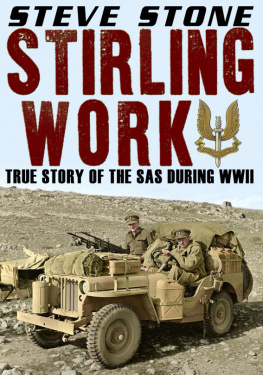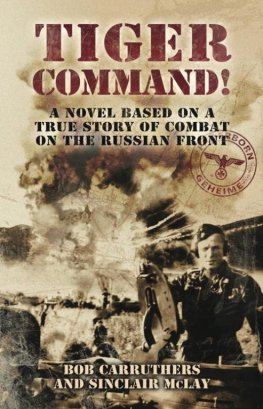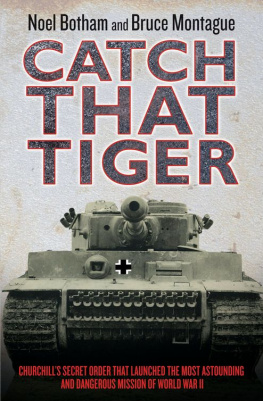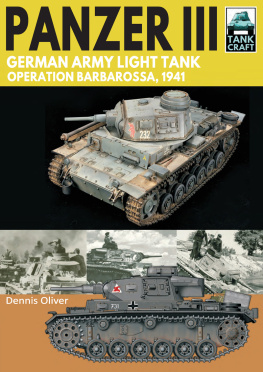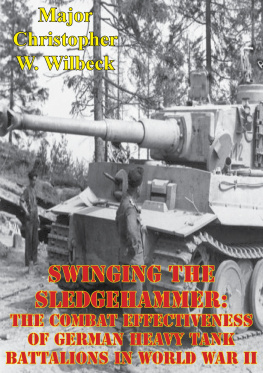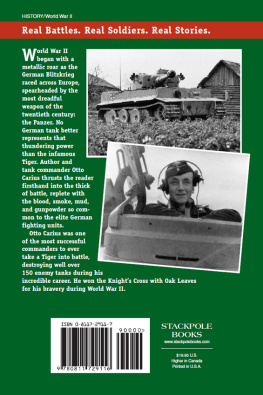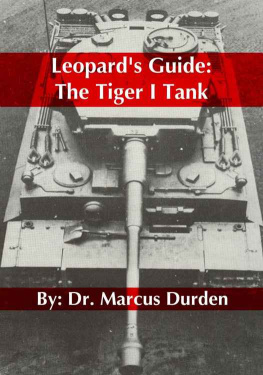Steve Stone
TIGER HEAT
GERMAN PANZERS ON THE EASTERN FRONT
NOTES ON TIGER TANKS IN THE BATTLE FOR FLORENCEIntelligence Bulletin January 1945
In the battle for Florence, a New Zealand division had its first experience with standard Tiger tanks on a fairly large scale, and noted several useful points about the ways in which the Germans employed these vehicles.
As a rule, the Tigers were well sited and well camouflaged with natural foliage. To delay the New Zealand infantry and to pick off tanks, the Tigers were used in hull-down positions. Another enemy method was to send Tigers by covered routes to previously selected positions. From these positions the Germans would fire a few harassing rounds, withdraw, and move to alternate positions. Tigers also were used to provide close support for German infantry, to lend additional fire power to artillery concentrations, and to engage buildings occupied by the New Zealanders. These troops noted that almost invariably a Tiger would be sited with at least one other tank or a self-propelled gun in support. The supporting tank or gun would remain silent unless its fire was absolutely needed. Sometimes a Tiger would be accompanied by infantrymen often only 6 to 12 of them deployed on the flanks as far as 50 yards away from the tank.
The New Zealanders were of the opinion that the Tigers heavy front and rear armour made it unlikely that the tank would be knocked out by hits on these parts. Simultaneous frontal and flank attacks were considered desirable. The New Zealanders found the Tigers side armour definitely vulnerable to fire from 17-pounders. Other weak spots, it was reported, were the rear of the tank, just over the engines, and the large exhaust hole, also in the rear and just over the left of centre. Some commanders found high explosives the most effective ammunition against these rear parts.
As a rule, the Tigers were placed in position so skillfully that the New Zealanders found it difficult to employ a sniping anti-tank gun or a towed gun for stalking purposes. Unless very careful reconnaissance was carried out to site the gun to the best advantage, and so as to detect German supporting tanks or self-propelled guns, the effort was likely to be fruitless. For this reason, the New Zealanders concluded that maximum time for reconnaissance, and the maximum amount of information, were essential for a battery commander who was called upon to engage a Tiger. The German tank-and-gun combination seemed to be slow at manoeuvring and firing, and also very susceptible to blinding by U.S. 75-mm smoke ammunition. On one occasion, two smoke rounds, followed by armour-piercing projectiles, were enough to force a Tiger to withdraw.
Sometimes the Germans used their Tigers with marked recklessness, the crews taking risks to an extent which indicated their extreme confidence in their vehicles. This rendered the latter vulnerable to New Zealand tank-hunting squads armed with close-range antitank weapons. When Tigers were closed down, and were attacking on their own at some distance from their supporting guns, the tanks vulnerability to those close-range weapons was increased correspondingly.
Tigers were effectively knocked out, or were forced to withdraw, by concentrations of field artillery. It was clear that German tank crews feared the damaging effect of shell fire against such vital parts as tracks, suspension, bogie wheels, radio aerials, electrical equipment, and so on. The New Zealanders incorporated medium artillery in several of their artillery concentrations, and decided that medium pieces were suitable when a sufficiently large concentration could be brought to bear. However, owing to a dispersion of rounds, it was considered preferable to include a good concentration of field guns, to thicken up the fire. The division in question had no experience in using heavy artillery against Tigers.
It was admittedly difficult to locate stationary, well camouflaged Tigers which had been sited for defensive firing. Worth mentioning, however, is the performance of an artillery observation post, which was notified by Allied tanks that a Tiger was believed to be in a certain area. The observation post began to range. A round falling in the vicinity of the suspected tank blasted away the vehicles camouflage, and the Tiger promptly retreated.
Several of the New Zealand antitank gunners experiences in combating Tigers will be of special interest:
1. A Tiger was observed about 3,000 yards away, engaging three Shermans. When it set one of the Shermans afire, the other two withdrew over a crest. A 17-pounder was brought up to within 2,400 yards of the Tiger, and engaged it from a flank. When the Tiger realized that it was being engaged by a high-velocity gun, it swung around 90 degrees so that its heavy frontal armour was toward the gun. In the ensuing duel, one round hit the turret, another round hit the suspension, and two near-short rounds probably ricocheted into the tank. The tank was not put out of action. The range was too great to expect a kill; hence the New Zealanders tactics were to make the Tiger expose its flank to the Shermans at a range of almost 500 yards, by swinging around onto the antitank gun. The Tiger did just this, and, when it was engaged by the Shermans, it withdrew. The enemy infantry protection of half a dozen to a dozen men was engaged by machine guns.
2. At the junction of a main road and a side road, a Tiger was just off the road, engaging forward troops in buildings. Another Tiger, about 50 yards up the side road, was supporting the first. A field-artillery concentration was called for. It appeared to come from one battery only. Although no hits were observed, both Tigers withdrew.
3. A Tiger on a ridge was engaged by what appeared to be a battery of mediums. After the first few rounds had fallen, the crew bailed out. (It is not known why.) Shortly afterward, while the tank still was being shelled, a German soldier returned to the tank and drove it off. About 10 minutes later, the remainder of the crew made a dash along the same route their tank had taken.
4. A tank hidden in the garage of a two-story house ventured out for about 20 yards, fired a few harassing rounds, and returned to its shelter. Many hits on the building were scored by 4.2-inch mortars firing cap-on, but little damage was visible. Each night the tank was withdrawn from the area, even though it was in an excellent concealed position and was protected by infantry. Later the house was examined. Although it had suffered appreciable damage and there were several dead Germans about there was no evidence that damage had been done to the tank itself.
Russia
November 1942
The late afternoon sunshine glistened off the white snow; the sun offered very little warmth to the cold Russian winter. In the middle of a large clearing surrounded by trees, a lone sixty-ton Tiger sat motionless in the snow. One main track had snapped and a road wheel had been blown off. From a distance, the Tiger still looked every bit as menacing as it had always been. Its distinctive step shape frontal armour wide tracks and large exhaust stacks mounted on the rear. This tank though had seen its fair share of battle and had the scars on its armour to prove it.
The crew of the Tiger was huddled together dead in their steel tomb. After a successful campaign, the tank now lay lifeless in a field. Flames still flickering around the engine compartment after it had been hit several times with armour piercing rounds. A testament to its armour that it had survived so many hits. Low on fuel, low on food and the tank in desperate need of maintenance the odds were stacked against the crew. They had only been together for six months and had ate, laughed, cried and now died in the same tank.


